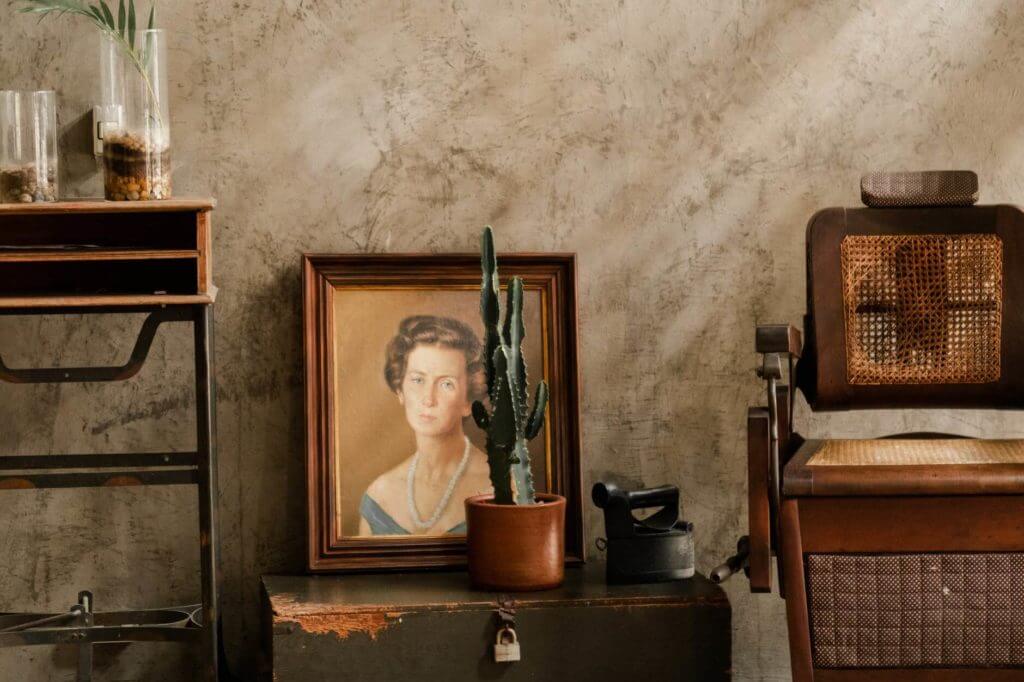When it comes to moving valuable artwork, such as paintings, take special care when packing and protecting them to ensure their safe arrival at the new location. Here you can learn how to pack paintings. Proper packing not only protects the art from damage but also helps preserve its value. Whether you are relocating your personal art collection or handling artwork for a client, there are several steps you can take to ensure that your paintings are packed securely.


Properly packaging your paintings is essential to protect them from damage during transportation or storage. Artwork can be fragile and susceptible to scratches, dents, or other types of damage, which can significantly reduce its value.
By taking the necessary precautions to pack your paintings correctly, you can ensure that they remain in pristine condition for years to come, allowing you to enjoy them and potentially pass them down as valuable heirlooms.
Moving to another state can be a stressful experience, and one of the biggest challenges is packing up your belongings. When it comes to packing framed pictures for moving, it’s essential to use the right materials to ensure they arrive at your destination in good condition. Hiring movers can be a good option for those who want to make the process easier, but it’s still important to properly pack your pictures to prevent damage during transport.
Some essential materials for packing framed pictures include bubble wrap, tape, cardboard boxes, and foam inserts to protect the corners and edges of the frames. By taking the time to pack your pictures correctly, you can avoid moving stress and enjoy your artwork in your new home.

Bubble wrap provides cushioning to prevent scratches or dents, while foam padding offers additional protection to the delicate surface of the artwork. Corner protectors are especially crucial to prevent damage to the corners and edges of the painting, which are often the most vulnerable parts during transportation.
Low-quality tape can easily break or lose adhesion, causing the artwork to shift or become damaged. By using sturdy and reliable tape, you can securely seal the package and prevent any potential damage to your valuable artwork. Investing in high-quality packing tape is a small but essential step to safeguarding your paintings and ensuring they remain in excellent condition.

Start by covering the glass with a layer of paper or bubble wrap, making sure to tape it securely. Next, use a piece of cardboard or foam board to create a barrier between the glass and the rest of the artwork, then secure everything together with packing tape. Tell the movers about the item so they safely place it on the moving truck.
Creating an ‘X’ pattern on the glass of a framed painting or artwork with painter’s tape is a simple yet effective way to help prevent it from shattering during transport. Start by applying a strip of painter’s tape diagonally across the glass, from corner to corner.
Repeat this process with another strip of tape, crossing the first one to form an ‘X’ pattern. This will help to distribute any impact across the surface of the glass, reducing the risk of it cracking or breaking.

We have a moving tip for protecting the glass surface from damage. One effective way to do this is to use cardboard or foam padding. Cut a piece of cardboard or foam to fit the size of the glass and place it against the glass surface, then secure it in place with tape. This will create a barrier between the glass and any potential impacts, reducing the risk of cracking or shattering.
To further protect the frame, it’s recommended to wrap it with bubble wrap. Begin by covering the front of the frame with a layer of bubble wrap, securing it in place with tape, and then wrapping the sides and back of the frame. This will provide an extra layer of cushioning to prevent scratches or dents to the frame, ensuring that the artwork remains in pristine condition.

When packaging canvas artwork for moving, it’s crucial to handle them with care to avoid any damage. Start by wrapping the painting in acid-free paper or bubble wrap and securing it with tape.
Then, place the painting inside a sturdy cardboard box with additional padding and label the box as “fragile,” just like you would all fragile items, to ensure it’s handled with care during transit. When carrying the painting, hold it by the frame or edges to avoid touching the canvas directly, which could cause smudging or other damage.
Acid-free paper is designed to prevent chemical reactions that can cause discoloration, fading, and deterioration of the canvas over time. Glassine paper, on the other hand, provides an extra layer of protection against dust, moisture, and scratches without sticking to the surface of the painting.
By using these types of paper, you can have a stress-free move and ensure your canvas artwork remains in optimal condition and retains its value for years to come.

Here are some of the very best tips for packing large and unusually shaped canvas paintings:
Boxes are a moving essential. So, when you start packing framed art, it’s essential to select an appropriate size box to ensure that the artwork is protected during transportation. Begin by carefully measuring the dimensions of the framed art, including the frame’s depth, height, width, and overall weight.
Next, choose a box that is slightly larger than the dimensions of the framed art and is made from sturdy materials such as corrugated cardboard or double-walled boxes for added protection. Look for boxes with flaps that can be securely closed and sealed with tape to prevent the artwork from shifting during transportation.
Additionally, consider using additional padding to fill any gaps in the box and provide extra protection. Remember to label the box as “fragile” and indicate which side should be facing up during transportation. By following these steps, you can ensure that your framed artwork is moved safely to the desired destination and in perfect condition.

Custom-built crates are a vital component for safely transporting high-value or delicate items. Unlike generic packaging options, custom-built crates provide tailored protection to fit the exact dimensions and specifications of your items.
The precision of the design, materials, and construction process ensures that the crate provides maximum protection during transportation. Furthermore, custom crates allow for the securement of items, ensuring that they are firmly held in place and prevent shifting or damage during transit.
Overall, custom-built crates are an essential investment for those looking to transport high-value or delicate items and offer peace of mind knowing that your goods are protected during transport.
If you have valuable and fragile artwork that needs to be transported, you may want to consider using a specialized cross-country moving company that can provide you with wooden crating. Wooden crating is a custom-built wooden crate that provides extra protection and security for your artwork during transit.
These crates are designed to fit the specific dimensions of your artwork and are built with heavy-duty materials to ensure that the artwork is well-protected during transport. When you work with a specialized long-distance moving company, they will typically assess your artwork and recommend the appropriate supplies and techniques, including wooden crating, if necessary.

In case you aren’t investing in special packing services and wooden crates, you need to know what is the best moving day tip for arranging paintings in the relocation truck. First, stack the artwork vertically rather than horizontally to avoid any crushing or damage.
Make sure to leave enough space between each piece of artwork to prevent them from touching or rubbing against each other. You can use blankets between the artwork to provide extra cushioning.
Furthermore, try to avoid placing heavy furniture or boxes too close to the artwork to avoid any pressure or damage. If possible, designate a specific area in the moving truck for the artwork and use tie-downs or straps to secure the artwork in place during transit.
If you need to leave some art behind and keep them in storage before transporting them, check out this video for advice on how to pack and store art:
Now that the relocation is over, it’s time to unpack everything. Unpacking and displaying your art collection after the move requires careful consideration of lighting, wall space, and your overall aesthetic preferences.
Start by assessing the size and style of each piece and determine the best location for it in your new home. Consider grouping pieces to create a gallery wall or spread them out throughout the space.
Pay attention to the lighting in each room and position pieces accordingly to showcase their best features. Lastly, experiment with different arrangements until you find the perfect display that brings your art collection to life.
If you want to ensure that your art collection arrives safely in its new home, it’s highly recommended to hire a professional moving company. Trico Long Distance Movers is an experienced and reliable moving company that offers a variety of packing and long-distance moving services to make your move as stress-free as possible.
Their team of professionals can handle packing your paintings with the utmost care, using high-quality materials to protect them during transport. With Trico Long Distance Movers, you can trust that your art collection is in good hands. Contact Trico Long Distance Movers today to get started on your move!
The best materials to use when packaging paintings for a move include acid-free paper or bubble wrap, foam corners, tape, and sturdy boxes.
To protect the glass on framed artwork during a move, cover it with painter’s tape or masking tape in an X shape across the surface. This will prevent the glass from shattering or cracking.
The best way to pack canvas paintings without damaging the surface or paint is to wrap them in acid-free paper or bubble wrap and place them in a sturdy box. Ensure that the painting is not touching any other objects in the box to prevent damage during transport.
To choose the right size and type of box for your framed art and paintings, measure the dimensions of the artwork and choose a slightly larger box. Use one with double walls for added protection.
Hiring professional cross-country movers is highly recommended, especially for valuable or delicate artwork. Benefits include specialized packing and handling techniques, insurance coverage, and peace of mind knowing that your art is in experienced hands.
Precautions to take when packing high-value or delicate artwork for a move include using professional packing materials, double-wrapping the artwork, and labeling the box as “fragile.”
To safely pack and transport large or unusually shaped paintings, consider using a custom-built crate or searching for professional “long-distance movers near me.”
The best way to pack unframed art or works on paper during a move is to place them between acid-free paper or tissue and then in a folder or envelope. Then, place the folder or envelope in a sturdy box.
To label boxes containing artwork, use labels that indicate “fragile” and “this side up” to ensure proper handling during the relocation.
Insurance options are available to protect your art collection during a relocation. Be sure to discuss insurance options with your relocation company and/or insurance provider.